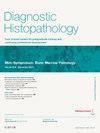An overview of infectious disease laboratory methods: an update for the histopathologist
引用次数: 0
Abstract
The histopathologist plays a crucial role in the diagnosis of infectious diseases. In some cases they are the first to highlight the presence of an infection where one was not initially suspected. Collaboration with other specialities is a key part of the histopathologist's work, though specialist knowledge of infectious disease pathology remains a niche area for many. The field of infectious disease diagnostics has undergone tremendous change over the past four decades, while maintaining methods developed by the pioneers of microbiology a century ago. This review will start with an outline of the key methodologies of microscopy, culture, serology, fungal antigen testing, and molecular techniques. The second part will focus on particular histopathological findings and their associated infections. The examples provided are representative of scenarios encountered in our practice in the United Kingdom. We include examples of the diagnostic workup of granulomatous inflammation, sulphur granules containing filamentous bacteria and viral cytopathic effects. The possibilities for PCR testing on fixed formalin paraffin embedded tissues is discussed. This review provides a foundation for histopathology trainees and specialists to strengthen their knowledge of infection diagnostics.
传染病实验室方法概述:组织病理学家的最新进展
组织病理学家在传染病诊断中起着至关重要的作用。在某些情况下,组织病理学家是第一个发现最初未被怀疑的感染的人。与其他专科的合作是组织病理学家工作的关键部分,尽管对许多人来说,传染病病理学的专业知识仍然是一个利基领域。在过去的四十年中,传染病诊断领域发生了巨大的变化,但仍保留了一个世纪前微生物学先驱们开发的方法。本综述将首先概述显微镜、培养、血清学、真菌抗原检测和分子技术等关键方法。第二部分将重点介绍特定的组织病理学发现及其相关感染。所提供的例子都是我们在英国的实践中遇到的具有代表性的情况。我们将举例说明肉芽肿性炎症、含丝状细菌的硫磺颗粒和病毒细胞病理效应的诊断工作。我们还讨论了对固定的福尔马林石蜡包埋组织进行 PCR 检测的可能性。这篇综述为组织病理学学员和专家加强感染诊断知识奠定了基础。
本文章由计算机程序翻译,如有差异,请以英文原文为准。
求助全文
约1分钟内获得全文
求助全文
来源期刊

Diagnostic Histopathology
Medicine-Pathology and Forensic Medicine
CiteScore
1.30
自引率
0.00%
发文量
64
期刊介绍:
This monthly review journal aims to provide the practising diagnostic pathologist and trainee pathologist with up-to-date reviews on histopathology and cytology and related technical advances. Each issue contains invited articles on a variety of topics from experts in the field and includes a mini-symposium exploring one subject in greater depth. Articles consist of system-based, disease-based reviews and advances in technology. They update the readers on day-to-day diagnostic work and keep them informed of important new developments. An additional feature is the short section devoted to hypotheses; these have been refereed. There is also a correspondence section.
 求助内容:
求助内容: 应助结果提醒方式:
应助结果提醒方式:


